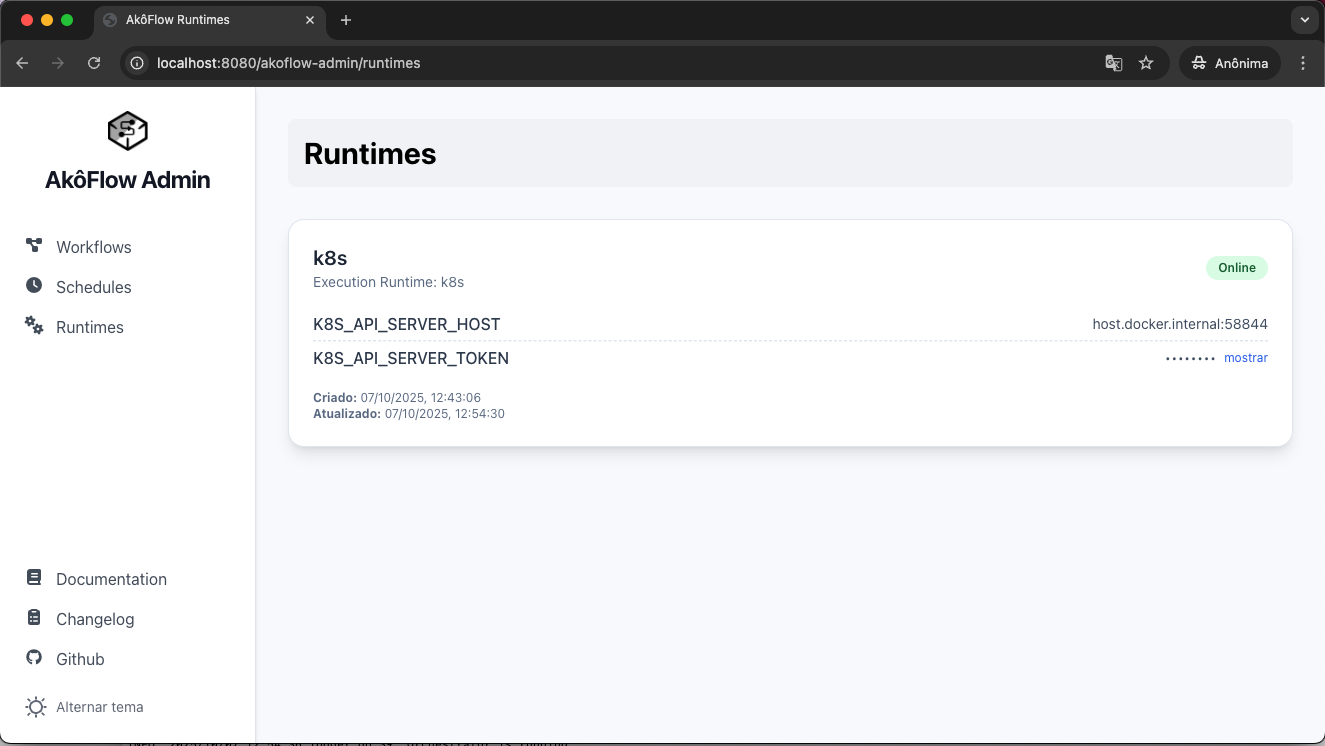Software Requirements
- Operating System: Linux, macOS, or WSL2 (Windows Subsystem for Linux)
- Docker: Install Docker
- kubectl: Install kubectl
- Kubernetes Cluster: One of the following:
- Kind (local)
- Docker Desktop Kubernetes (enable Kubernetes in settings)
- Cloud providers (e.g., EKS, GKE, AKS)
Quick Installation
Run the following command to install AkôFlow:
curl -fsSL https://akoflow.com/run | bash
AkôFlow will be available at http://localhost:8080.
Setup on Local Kubernetes Cluster (Kind)
-
Install Kind:
Follow the instructions on the Kind GitHub page to install Kind.
- Create a Kind Cluster:
kind create cluster --name akoflow-clusterCheck Host and Port of the Kubernetes API Server:
You need to find the host and port of the Kubernetes API server to configure AkôFlow correctly. Run the following command:
kubectl cluster-info --context kind-akoflow-clusterLook for the line that says
Kubernetes control plane is running at .... -
Install AkôFlow in the Cluster:
This resource file will set up services, deployments, config maps, and persistent volume claims necessary for AkôFlow to run in a local cluster.
kubectl apply -f https://raw.githubusercontent.com/UFFeScience/akoflow/main/pkg/server/resource/akoflow-dev-dockerdesktop.yaml -
Create Token for AkôFlow Engine to Access the Cluster:
Note: The token duration is set to 800 hours. You can adjust it as needed.
kubectl create token akoflow-server-sa --duration=800h --namespace=akoflow -
Add Variables to
.envFile:AkôFlow will create a
.envfile in the$HOME/akospacedirectory. You need to add the following variables to the.envfile:K8S_API_SERVER_HOST=host.docker.internal:58844 K8S_API_SERVER_TOKEN=...your_token_here... AKOFLOW_SERVER_SERVICE_SERVICE_HOST=host.docker.internal AKOFLOW_SERVER_SERVICE_SERVICE_PORT=8080Replace
...your_token_here...with the token you created in the previous step. Note: The host can belocalhostorhost.docker.internaldepending on your Docker setup. The port should match the port of your Kubernetes API server. -
Restart AkôFlow:
Restart the AkôFlow container and run the installation script again.
